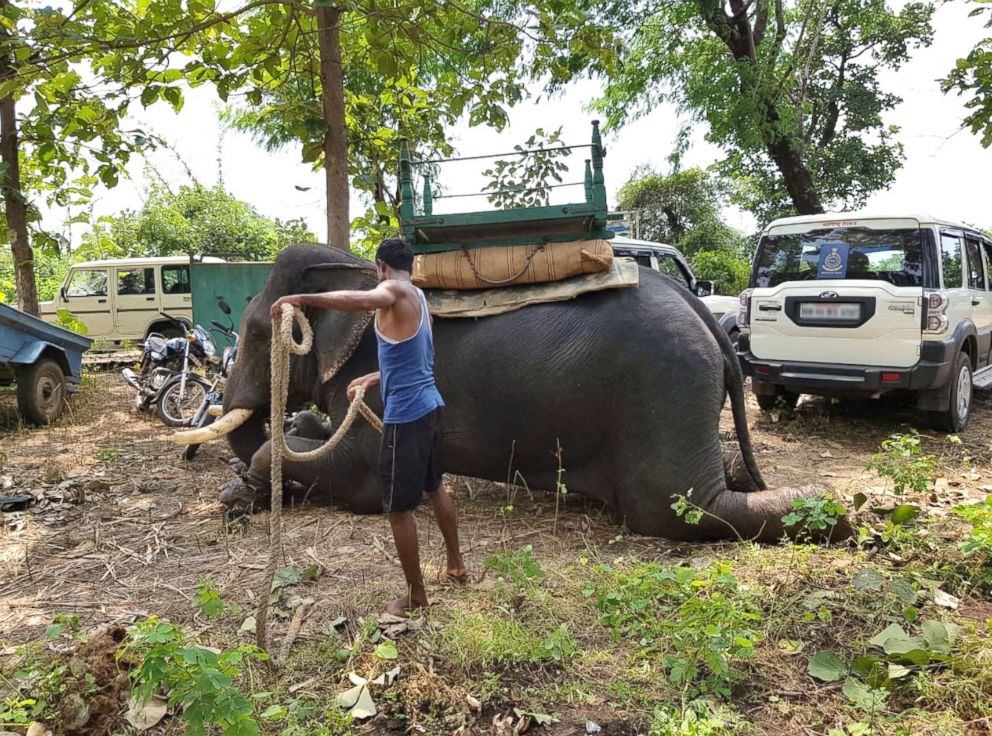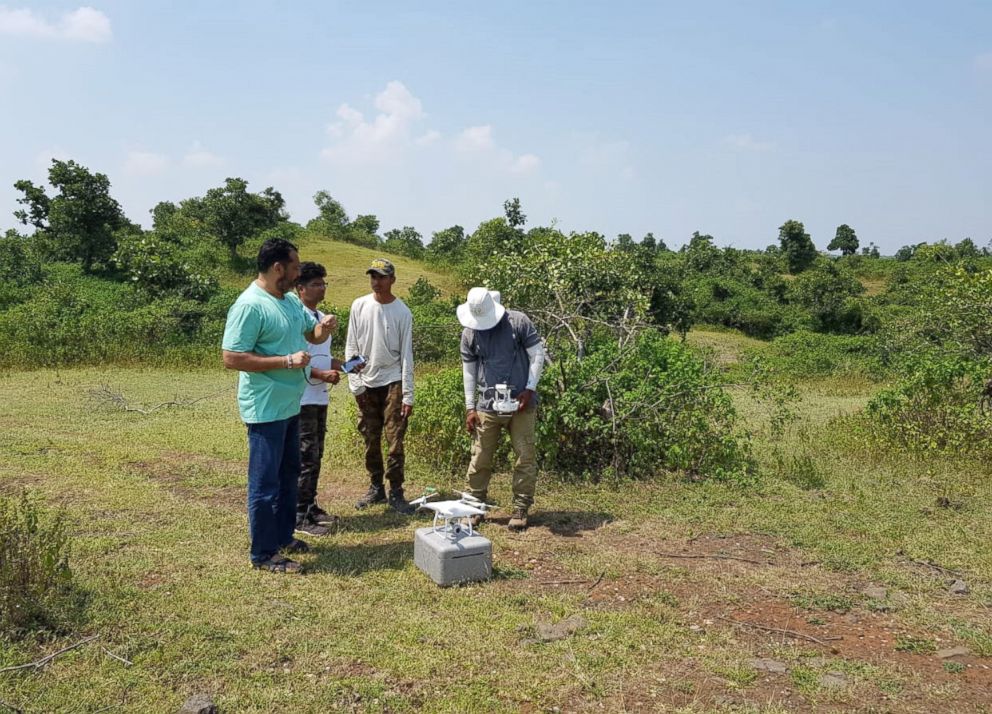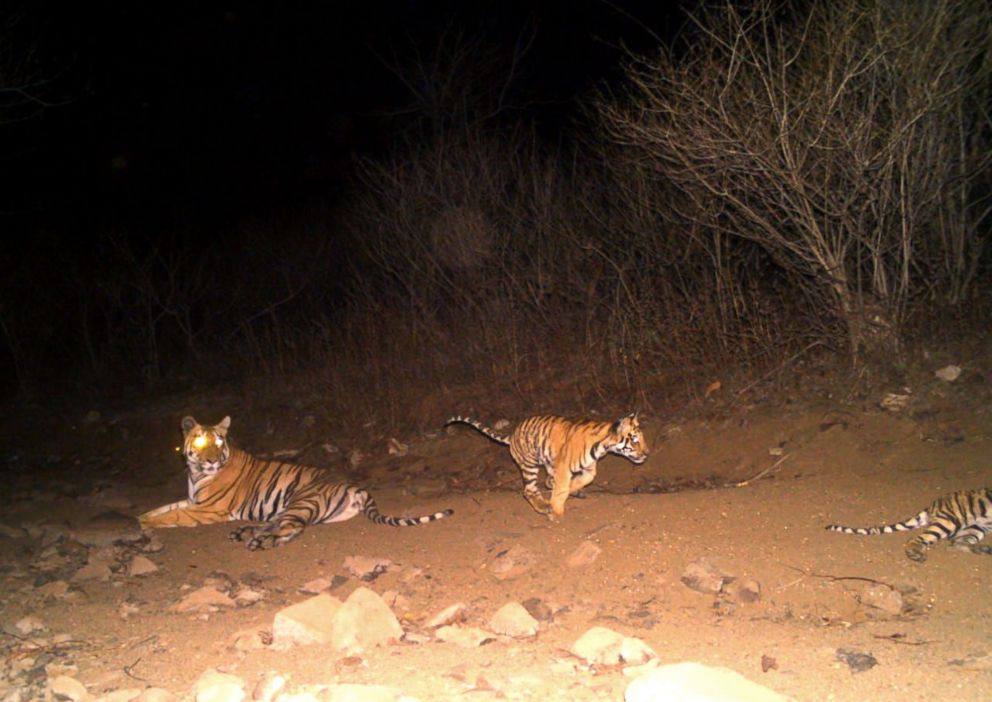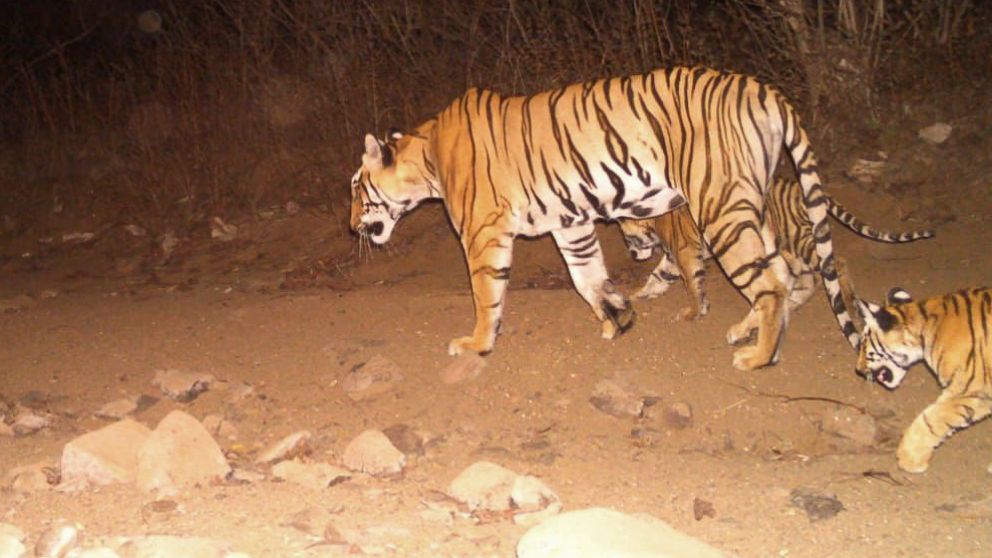[ad_1]
The crackle of wireless phone static merged with the buzzing of jungle flies as a group of seven men in olive green uniforms combed through the forests around the Indian village of Pandharkawada.
The men, most armed with batons and one with a gun, could have been mistaken for an army platoon. But these men weren’t military, they were working for India’s forest department and their operation was to find “T1,” a 6-year-old female tiger officials believe is responsible for the deaths of 13 people.
 Maharashtra Forest Department
Maharashtra Forest Department“A sequence of human killings was noticed from June 2016 onward. In the beginning, our staff did not think that this is a very serious thing,” AK Misra, principal chief conservator of forests, told ABC News. “We took the first few cases as routine, the cases that sometime occur as a result of human-animal conflict.”
However, the animal-inflicted deaths turned out to be anything but routine. They were the first in a chain of human killings in the region called Yavatmal, usually known for its cotton plantations and abundant sunshine.
 Maharashtra Forest Department
Maharashtra Forest DepartmentThe hunt for T1 commenced in earnest about a year ago. Officials said they underestimated the scale of the task at first.
 Maharashtra Forest Department
Maharashtra Forest Department“She is a very clever tigress. She is killing the baits, but if the slightest disturbance is there, she doesn’t come there at all,” Sunia Limaye, the additional principal chief conservator of forests, who has been working closely on the operation, told ABC News.
The tiger has strayed away from the areas that are usually exclusive forest areas to an area that has a “honeycomb” layout in Pandharkawada, officials believe. In this area, it is hard to tell where forest land ends and farmland begin.
The killings have struck fear in the hearts of people in the more than 25 villages in the area, many of whom are cattle herders and cotton farmers.
Ram Krishna Lonkar, a farmer from one of the neighboring villages, showed ABC News the site of the last killing.
 Maharashtra Forest Department
Maharashtra Forest Department“I was returning home from the fields and saw a crowd had gathered here, right at this spot,” he said. “The tigress had attacked a farmer and killed him.”
Other farmers described how the tigress dragged the man’s body from one side of the road to another.
“In the beginning, it may have accidentally killed some people,” Misra said. “But in the last three to four cases, we have noticed that, in one case, it dragged the human body for quite a long time. Then in another case, it ate up almost 60 to 70 percent of the body. That’s when we thought ‘This is not the normal behavior of the tiger.'”
What’s made the operation even more complicated is the presence of two cubs. Camera trap images have revealed that the tigress gave birth to the two cubs over the past year. Officials estimate they are 9 to 10 months old and she has become more elusive in that time.
 Maharashtra Forest Department
Maharashtra Forest DepartmentOver the past few weeks, the operation has come under a lot of pressure as officials have tried many tactics to trap the tiger and failed. The forest department has deployed 104 camera traps, specialized sniffer dogs, a paraglider to try and see the tigress from the air, elephants and thermal imaging drones. Some reports said they even tried designer cologne.
“We are also using PIPs, or pug impression pads,” Misra said. “An area of land is cleared and if any animal moves across that area, its foot impression is recorded.”
A special hunter from the Indian city of Hyderabad was also called in to help manage the situation.
Animal right advocates have named the tiger Avni and have been protesting the operation to capture or kill her, creating campaigns on social media under the name “Let Avni Live.” Actors, politicians and locals in cities like Delhi, Bangalore and Mumbai have weighed in and posted videos on Facebook urging authorities not to shoot the animal.
India’s Supreme Court, the country’s highest court, ruled that it would not interfere if authorities were forced to shoot the tigress while trying to capture her.
“My order says tranquilizing efforts should be made,” Misra said. “If all the tranquilizing efforts fail, then shooting. So it is a very guarded order.”
Many of his colleagues at the makeshift base camp being used as a command center for the operation expressed support for the plan. As the sun set over the large forest, guards said they were hopeful all of this would be over soon.
“The season is on our side,” one guard said.
As the rainy season passes giving way to a drier harvest season, the Lantana plants in the area will slowly become less dense and other vegetation will likely recede giving authorities better visibility in these areas. Authorities believe it will be easier to find the tiger when the area is clearer.
Until then, the central India district remains on high alert for the most-wanted animal.
[ad_2]
Source link

